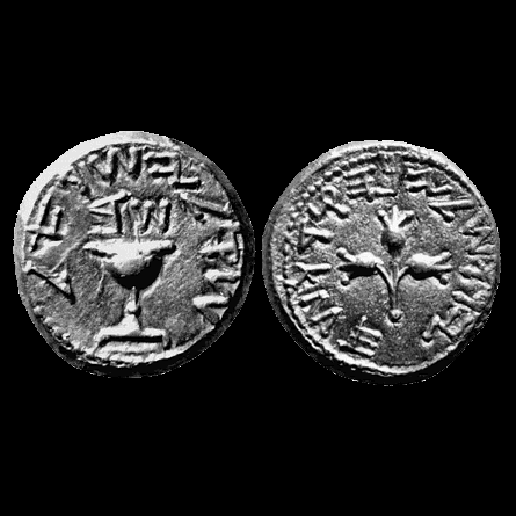|
4 parshas
Parshat Shekalim: Safeguarding the Mitzvah
As Jews we are
constantly praying for and anticipating the rebuilding our Beit
Hamikdash so that we will, once again, have the opportunity to serve
God the same way that our ancestors did before we were exiled. Ever
mindful of human nature, the Rabbis instituted many halachot and
customs designed to safeguard the memory of certain mitzvot and to keep
them fresh in our minds during these long years in galus. One such
safeguard instituted by the Rabbis was the reading of four special
Torah portions on each of the four Shabbatot leading up to the month of
Nissan and Pesach. These so called “arbah parashiot”, which are
read from an additional Sefer Torah, refer to certain of the special
mitzvot which we no longer can perform but which historically were
performed at this time of year.
In parshat shekalim we learn about the mitzvah
incumbent on all Jewish males from the age of twenty to sixty to bring
a machtzit hashekel, a half shekel coin, to the treasury of the Mishkan
or Beit Hamikdash. These coins were brought into the treasury of the
Beit Hamikdash and were used to fund the various items necessary for
the performance of the daily sacrifices such as the korban tamid, the
korban mussaf and the wood and salt for the altar throughout the year.
The Sefer Hachinuch writes that the purpose of this mitzvah is to give
equally to all of Bnei Yisrael the opportunity and merit of bringing
these korbanot. It’s for this reason that everyone had to bring exactly
half a shekel, no more and no less, so that every person, regardless of
his wealth, or lack thereof, had an equal share in the mitzvah. Our
rabbis also teach us another important lesson from the machtzit
hashekel, namely, that Bnei Yisrael is one unit. There is no Jew
who stands alone and complete unto himself without the need for
another. Rather, every Jew needs someone else in order to be
complete.
The Gemara relates that each Nissan only the funds
collected for the new year would be used to fund that year’s
korbanot. Any moneys left over from the previous year were used
for different purposes. This, therefore, necessitated that all funds be
collected by the beginning of the month of Nissan. In the time of the
Beit Hamikdash, messengers were sent out on the first of Adar, a month
before, to remind the people to bring their coins to the
representatives of the Beit Hamikdash. This gave the people a full
month to turn in machtzit hashekel.
Today, in the absence of the Beit Hamikdash, we
can’t perform this mitzvah. So you see, in order that the mitzvah
of the machtzit hashekel not be forgotten, our rabbis instituted this
practice whereby we take out an additional Sefer Torah and read about
it. They established the time for this to coincide with the exact same
time of year that the messengers would start announcing to the nation
that they should bring their machtzit hashekel, namely on or before
Rosh Chodesh Adar. May the merit of our remembering this mitzvah
bring us to its actual performance when the Beit Hamikdash will be
rebuilt – may it be speedily and in our days.
Rabbi Eliezer Kessler
Houston, Texas
|
